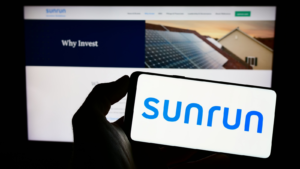
With the world fighting to go green, you may want to load up on clean energy stocks.
For one, according to the U.S. Department of the Interior, “The demand for renewable energy has never been greater. The technological advances, increased interest, cost-effectiveness, and tremendous economic potential make these projects a promising path for diversifying our national energy portfolio while at the same time combatting climate change and investing in communities.”
Two, 200 countries recently agreed to transition from fossil fuels, which could result in “tripling renewable energy capacity globally and doubling the global average annual rate of energy efficiency improvements by 2030,” according to CNBC.
Third, according to the International Energy Agency, renewables could make up more than a third of total electricity generation next year. Nuclear power generation is expected to see all-time global highs by next year.
But that’s just the start.
With the world going green, strongly consider adding clean energy stocks to your portfolio.
Cameco (CCJ)

With uranium prices still running, investors may want to consider Cameco (NYSE:CCJ).
After finding support around $40, the stock is starting to pivot higher. Last trading at $43.32, I’d like to see it initially test $48. The growing interest in uranium and tensions in key uranium-producing parts of the world could easily send higher prices, along with CCJ.
In addition, according to CEO Tim Gitzel, uranium prices are soaring higher due to global factors that will “persist for years,” says Seeking Alpha. “Market tightness caused by supply chain challenges, ongoing mine depletion, declining secondary supplies, and a decade of underinvestment amid low market prices likely will persist well into the next decade.”
We also have to consider that countries worldwide support nuclear energy. China’s Chairmen of China National Nuclear Corporation (CNNC) said the country can add as many as 10 reactors per year, as Sprott.com notes. Japan just added uranium to its critical minerals list. The U.S. even unveiled a bill with $2.7 billion earmarked for nuclear energy.
Sunrun (RUN)

We can also look at oversold solar stocks, like Sunrun (NASDAQ:RUN).
Over the last few days, RUN bottomed out at around $9.34 and is starting to pivot higher. Previous trading at $13.18, I’d like to see RUN initially retest at $18.
Helping, Nextracker CEO Dan Shugar noted, “Insatiable demand for electricity in the U.S. will overpower headwinds facing the solar industry, leading to an unprecedented buildout of panels,” as said by Bloomberg.
Helping, analysts at Jefferies say RUN could double as the company shifts to solar energy storage. The firm now has a buy rating on RUN, with a price target of $31.
They added RUN “is the leading clean energy provider with a 60% residential market share for new subscriptions,” as noted by CNBC. “Sunrun’s transition from a solar only company to one that also provides battery storage should act as a catalyst that will increase the net value of its subscribers.”
First Trust NASDAQ Clean Edge Green Energy Index Fund (QCLN)

We can also diversify at a lower cost with the First Trust NASDAQ Clean Edge Green Energy Index Fund (NASDAQ:QCLN), which will give us a lot of exposure to some of the best clean energy stocks.
At $34.68 with an expense ratio of 0.58%, the ETF holds 56 green energy stocks, including First Solar (NASDAQ:FSLR), Enphase Energy (NASDAQ:ENPH), Albemarle (NYSE:ALB), Tesla (NASDAQ:TSLA) and Brookfield Renewable (NYSE:BEP) to name just a few.
To be included in the fund, a stock must fall in the category of Advanced Materials, including nanotech, membranes, silicon, lithium, carbon capture; Energy Intelligence, including conservation, energy management systems, smart grid, superconductors and power controls; Renewable Electricity Generation & Renewable Fuels, including solar photovoltaics, concentrating solar, wind, geothermal and ethanol, biodiesel, biofuel enabling enzymes; and Energy Storage & Conversion, which includes advanced batteries, hybrid drivetrains, hydrogen, fuel cells for stationary, portable and transportation applications, as noted by First Trust.
Technically, the fund has been a disaster since falling from about $57 to a recent low of $34.68. However, with growing green energy demand, and hopeful rate cuts from the Federal Reserve, the QCLN ETF could retest those prior highs.
On the date of publication, Ian Cooper did not hold (either directly or indirectly) any positions in the securities mentioned. The opinions expressed in this article are those of the writer, subject to the InvestorPlace.com Publishing Guidelines.





